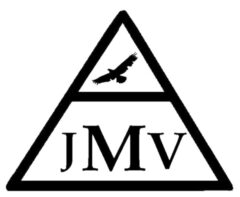Akshaya Kumar Das, Faisal Qureshi, Sandeep Kumar, Nikhil Kothari
Cite
Das AK, Qureshi F, Kumar S, Kothari N. The vanishing threat: Stealthy malfunction of closed suction system. J Mech Vent 2023; 4(3):120-123.
Abstract
This case report presents a rare case of a mechanical ventilation leak that was initially missed by clinicians in a patient with a myxoedema coma. Despite all efforts to investigate the causes of the leak, including a bedside lung ultrasound and chest radiograph, the leak persisted. It was eventually discovered that the rhythmic inflation and deflation of the polythene covering the closed suction system was causing the leak. The closed suction system was replaced with a new one, and the tidal volume was restored, resulting in the resolution of the leak alarm. The volume leak alarm and low volume alarm are important indicators of potential problems during mechanical ventilation, and close suction system malfunction is a potential cause of volume leak that should be considered in mechanically ventilated patients. Regular monitoring and appropriate management of these alarms and potential causes can help prevent complications and optimize patient care.
Keywords
Mechanical ventilation, volume leak alarm, closed suction system, and myxoedema coma
References
| 1. Restrepo RD, Walsh BK. Humidification during invasive and non-invasive mechanical ventilation. Respir Care 2012; 57(5):782-788. https://doi.org/10.4187/respcare.01766 PMid:22546299 | |||
| 2. Chatburn RL. Classification of ventilator circuits: update and analysis. Respir Care1996; 41(10):941-954. | |||
| 3. Hess DR. Ventilator-associated pneumonia: minimizing its impact on survival. Respir Care 2005; 50(7):900-907. | |||
| 4. Khilnani GC, Hadda V. Essentials of mechanical ventilation. Indian J Anaesth 2019; 63(10):770-778. | |||
| 5. Branson RD, Johannigman JA. Understanding and preventing ventilator-associated lung injury. Respir Care 2005; 50(7):927-939. | |||
| 6. Kallet RH, Branson RD. Ventilator-associated pneumonia in patients receiving mechanical ventilation: diagnostic difficulties and preventive strategies. Respir Care 2005; 50(7):900-915. | |||
| 7. Marini JJ, Smith TC, Lamb V. Estimation of inspiratory muscle strength in mechanically ventilated patients: the measurement of maximal inspiratory pressure. J Crit Care 1986; 1(1):32-38. https://doi.org/10.1016/S0883-9441(86)80114-9 | |||
| 8. Cvach MM, Stokes JE, Manzoor SH, et al. Ventilator alarms in intensive care units: frequency, duration, priority, and relationship to ventilator parameters. Anesth Analg 2020; 130(1):e9-e139. https://doi.org/10.1213/ANE.0000000000003801 PMid:30234538 | |||
| 10.Sole ML, Su X, Talbert S, et al. Evaluation of alarm settings for early detection of hemodynamic instability in critically ill patients. Am J Crit Care 2019; 28(1):10-18. | |||
| 11.Zhang H, Su X, Liu D, et al. The occurrence of ventilator-associated pneumonia in a Chinese tertiary hospital: A prospective cohort study. Crit Care 2014; 18(3):R64. |
